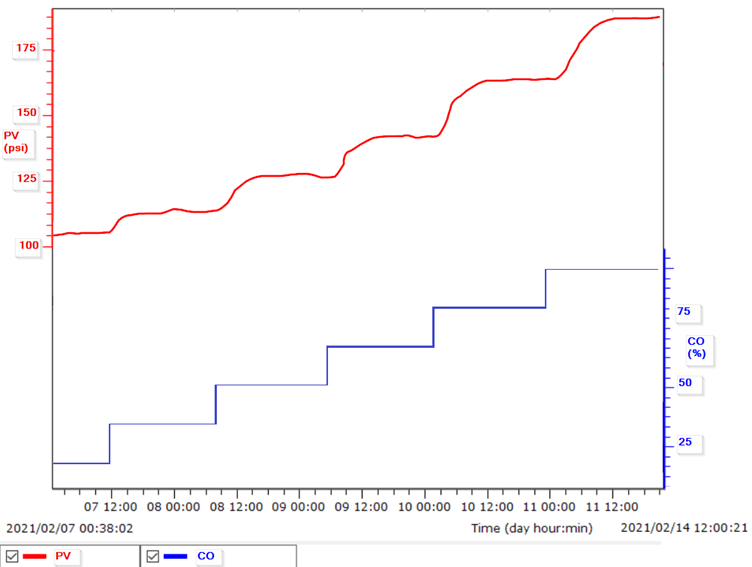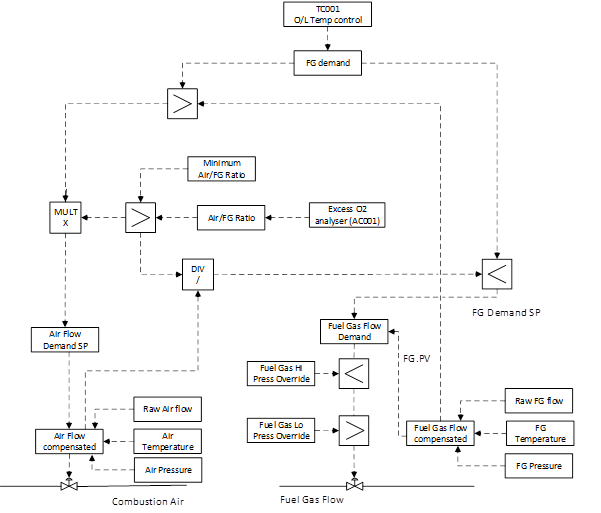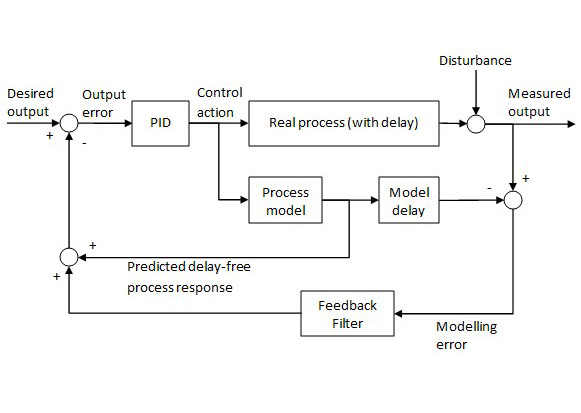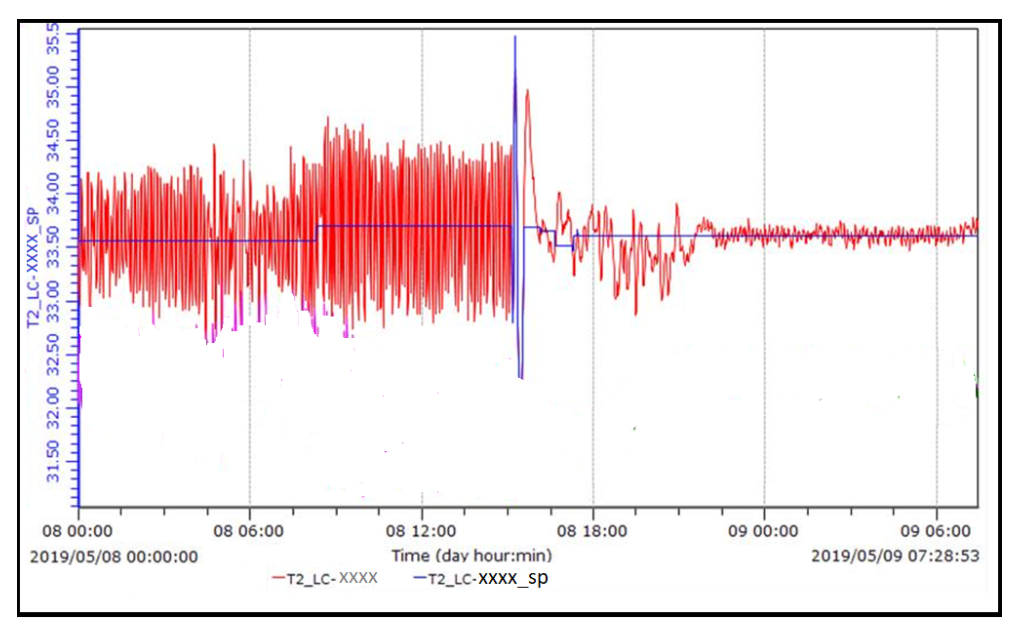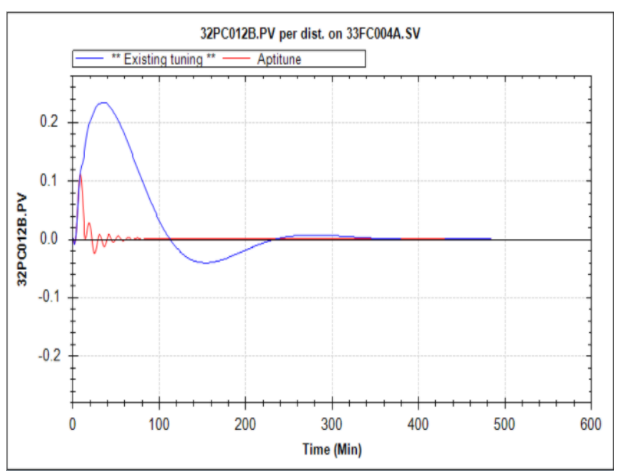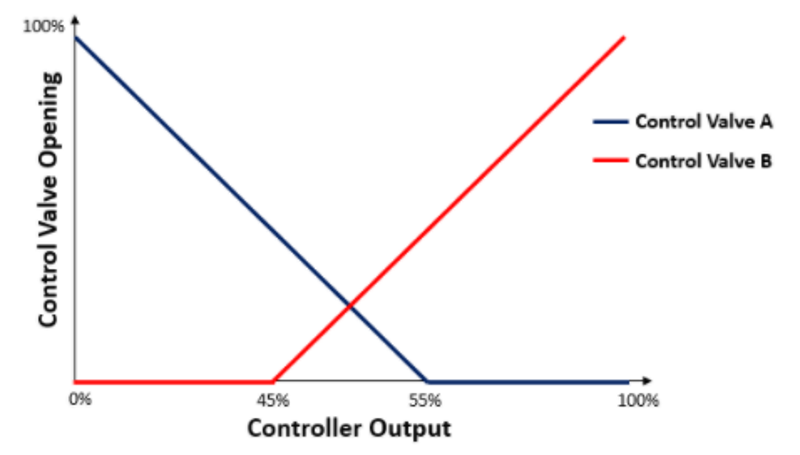PID control is widely used for process control across various industries. However, PID control performs well if the process behaviour is almost linear, which is not the case most of the time. Non-linearities are quite common in practice, although they are often not properly identified or considered for the design of the control system.
Non-linearities – an invisible enemy of your PID control loops
Topics: PID tuning, PID tuning software, Advanced Process Control
Cross-limiting Control is implemented, what’s next?
The cross-limiting control schemes are utilized in furnaces to ensure the airflow never goes below the safe limit. These control schemes are designed so that whenever there is an increase in demand for fuel gas, the airflow will lead fuel gas flow, and in the case of a decrease in fuel gas demand, the airflow will lag the fuel gas flow.
Topics: PID tuning, Plant performance, Advanced Process Control
Smith Predictor: when to use it and how to tune it
From refineries to petrochemical and chemical industries, the Smith predictor is used to improve the control of processes with a long dead time. The delayed behavior of the process is compensated by using an approximated model in the control structure. It is common for process control engineers to evaluate the need for such control structures and keep them performant. This blog explains the consequences of a long process dead time and what tools to use when tuning your Smith Predictor.
Topics: PID tuning, PID tuning methods, PID control equations
Non-minimum phase systems are difficult to understand and even difficult to tune manually. The understanding of non-minimum phase system and control strategies explain in this blog.
The response of a non-minimum phase system to a step input has an "undershoot". This means, if the output was initially zero and the steady-state output is positive, the output becomes negative before changing direction and converging to its positive steady-state value.These systemsare difficult to control due towaiting time until the initial undershoot for a positive gain system or overshoot for a negative gain system.
Topics: PID tuning
Hydrogen: Do you want to reduce the venting inside your refinery?
Hydrogen is one of the key raw materials used in the refinery. It is used in various process units: Hydrocracker, Aromatic plants, to name a few. Since the process is dynamic, the demand for H2 keeps on varying, and excess is vented out either to fuel gas or to flare to control the Header pressure. The good news is that the venting of the H2 can be reduced. In some cases, it can be reduced to close to zero.
Topics: PID tuning
How to approach a PID tuning project in a phased way
Many operations managers face a challenge to maintain all PID loops on their plant in good working order. Plant safety may be at stake in some cases if some of these PID loops are kept in manual mode. Poor PID tuning may also contribute towards degradation in plant performance, leading to unstable operation and, eventually, reduced profitability. Operations managers need to create a culture of continuous PID performance monitoring and improvement, ensuring safe and optimal plant performance. How do you embark on this journey, and what are the best practices?
Topics: PID tuning
Large processing facilities such as Refineries and Chemical plants spend money on technology to enhance process performance. Metrics are typically put in place to measure how well the technology is performing, and control engineers are required to report on these metrics regularly. There are thousands of PID loops on a typical refinery; what strategy should you use to identify poor performers and then rectify the issues?
How do you ensure that the reported metrics provide your management a full and clear picture of PID loop performance?
Topics: PID tuning
How to Successfully Configure and Tune a Split Range PID Control Strategy and Not Die Trying
A split range control strategy uses software or hardware-based splitter and two or more final control elements to control a process variable. Split range strategies can be found in different applications across process industries: temperature control with heating/cooling media, large and small valves installed in parallel, pressure control with a vent valve, etc.
Usually, split range applications are tricky and time-consuming, and you should know what I’m talking about as a process control engineer
Oscillations over the entire range of operation and across the split point, typically improperly selected at 50%, are common in real operation.
In this blog, we will discuss the usual problems you might face when configuring and tuning a split range strategy and the possible and practical solutions to overcome it.
Topics: PID tuning
Temperature Control for Batch Reactors in your industry
Batch reactors are used to produce a variety of products in all sectors of process industries, especially in the pharmaceutical, specialty chemicals, wastewater treatment and the beverage sector. The flexibility to use the same equipment to produce different products sometimes makes batch reactor difficult to control. If we add to this the integrating/runaway process response, suboptimal PID control loop tuning, poor control loop elements performance, and an inappropriate process and control design,we might have the perfect recipe for disaster. If you want to learn more about obtaining optimal batch reactor temperature control, keep reading the blog.
Topics: PID tuning
There are many critical PID loops in an operating plant. Operations managers typically like to minimise changes on tuning parameters on such PID loops, quite often maintaining the status quo, even if improvements are possible or desirable. The performance of such PID loops could be optimised if they could be inserted in manual mode followed by moving the output a few times, collecting data, and calculating PID tuning using PID tuning software. Unfortunately, operations managers may not allow you to insert this critical loop in manual, so how can you calculate PID tuning parameters for such a loop while maintaining it in closed-loop mode? In this PID tuning example, we’ll show the best practices and pitfalls.
Topics: PID tuning

